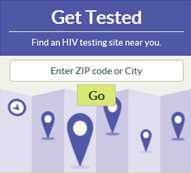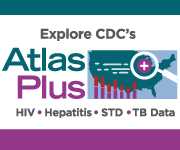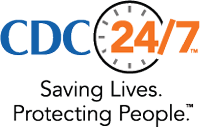NEEMA Funded Projects by Topic Area - Tuberculosis
Transmission of tuberculosis in four key states
This effort seeks to develop a model that will project the impact of selected interventions for tuberculosis (TB), including the ability of those interventions to speed time to elimination, in the United States. Our approach begins with modeling the four key states responsible for over 50% of incident active TB in the US: California, New York, Florida, and Texas. These states differ from each other and the remainder of the US in a number of key variables, including overall TB incidence, percent of TB incidence in the foreign-born, and racial/ethnic makeup of cases. Modeling these four key states will enable us to explore whether these substantial differences in TB case makeup (as well as differences in migration, demographics, socioeconomic status, and projected prevalence of latent TB infection) translate into differences in the projected trajectory of TB, as well as the relative cost and impact of targeted TB interventions, in these states (compared to each other and relative to the remainder of the United States). It will also allow for estimating the impact of regionalized services (e.g., diagnostic testing) in these states, and the proportional contribution of these states to US TB elimination This model will allow exploration of those differences in a single unified framework, thereby suggesting the best approach for constructing a final model of TB in the United States that accounts for important demographic trends as well as TB latency (and treatment thereof), immigration policies, and ongoing transmission.
Targeted testing and treatment of latent TB infection among high-risk populations based in the United States
This project aims to develop models of targeted testing and treatment of latent TB infection (LTBI) among various subgroups in the United States who are at high risk for TB disease. A Markov model of LTBI, patterned after an earlier published model, will be used, with a decision tree incorporated to model cascade of care. Key research questions explored included which populations and sub-populations to screen and treat for LTBI, which treatment regiments should be used, and what screening modality should be used. The specific subpopulations included in the analysis are: foreign born, foreign-born HIV +, foreign born with diabetes mellitus, and foreign born with end stage renal disease. Bayesian estimation model has been developed to derive point estimates and a joint uncertainty distribution characterizing this set of essential parameters.
Transmission modeling of tuberculosis in the United States
The goal of this project is to develop a model of tuberculosis in the United States to examine the long-term transmission dynamics of the TB epidemic, and to assess the likely impact, costs, and cost-effectiveness of different interventions at the population level. A novel mathematical model has been created that simulates the major mechanisms determining long-term TB outcomes: TB transmission, natural history, and control interventions; importation of infections and cases via immigration; age effects and the aging out of high-burden cohorts; acquisition and propagation of drug-resistant TB; HIV co-infection; and the concentration of TB risk within high-risk groups. Preliminary results suggest an ongoing, approximately log-linear decline in TB cases among the US-born population, with incidence increasingly dominated by disease among foreign-born individuals.
Impact of international TB control efforts on TB elimination in the United States
This project builds on the Harvard-DTBE TB transmission model to provide a more detailed consideration of the potential effects of changing patterns of infection and disease status among immigrants on long-term TB epidemiology in the United States. The model is extended to accommodate additional analyses of scenarios reflecting different intensity and success in TB control efforts in those countries that are key sources of latent and active TB among those entering the US, and the changes that might occur through broader societal changes. The project extends prior work by incorporating additional details relating to immigration trends and composition, reflecting alternative outcomes from TB control in migrant sender countries, changes in immigration policy and screening procedures, and overall epidemiological trends in sender countries.
Impact of strengthening TB control in a high prevalence sender country on TB burden and service utilization in the United States
In this project we will expand the Harvard-DTBE modeling framework developed in the initial years of the NEEMA consortium to mechanistically model the impact of TB control measures undertaken in a high prevalence sender country on the burden of TB in the United States. This model will leverage the work undertaken to date, adapting the existing modeling framework to represent the current state of TB epidemiology and control programs in the sender country, and using this new country model to examine the impact of various control measures. The new model will be linked with the existing United States model through immigration between the two countries to project the impacts on TB burden and service utilization in each country. These analyses will demonstrate the combined benefits of intensified control efforts abroad and the extent to which these efforts can contribute to the TB elimination goals in the United States. This two-country model can then serve as a template in future study years to incorporate additional high prevalence countries.
A single unified model for TB elimination in the United States
As part of the goal of achieving TB elimination in the U.S. there is considerable interest in creating a single unified model for TB elimination in the US. The NEEMA consortium currently includes several TB elimination models, including California, New York City, the four‐State model (CA, NY, FL, TX) and an overall U.S. model. Although the models have qualitatively similar results, it may be that these modelling efforts can be combined to create a single model that more effectively describes elimination potential within the overall US and important sub‐regions. As part of this work, we will discuss methods for gathering and reconciling data sources for establishing LTBI population denominators.
Identification and recruitment of hard-to-reach immigrant populations
Systematic reviews are being conducted to identify the effectiveness and efficiency (including costs) of recruiting hard-to-reach immigrant populations for targeted TB and latent TB infection testing and treatment (TTT). Topics include: community-based TTT, contact investigation, and institution -based TTT (for individuals with medical risk factors).
Modeling the impact of US Preventive Services Task Force (USPSTF) recommendations for latent TB Infection screening in California
The USPSTF recently released recommendations providing guidance for primary care clinicians on screening of adults at increased risk for latent TB infection (LTBI) as a targeted measure to prevent TB (USPSTF 2016). These recommendations include guidance for LTBI testing in primary care settings among asymptomatic adults who are at increased risk for either exposure to TB or progression or reactivation to active disease. These high‐risk groups include: 1) foreign born population 2) immunosuppressed patients (including HIV positive patients) 3) patients living in congregate settings 4) individuals who are contacts of active cases. A variety of diagnostic tests and treatment regimens for LTBI are also recommended. The primary goal of this proposed project is to assess the likely impact of these recommendations on TB control in California overall and where available at the county level. In particular, the current individual‐based model for California will be expanded to consider USPSTF as a targeted testing and treatment (TTT) strategy for TB control and potential elimination. Expansion of the model and impact will take into account: 1) the estimated number of individuals at risk of TB infection and progression/reactivation who present to primary care settings; 2) the anticipated reactions of the health system including insurers, health plans, and clinicians to USPSTF guidance; 3) the effect of insurance coverage on at‐risk populations; 4) the epidemiologic and economic impact of USPSTF guidance on the cascade of LTBI care (test acceptance & performance, linkage to treatment, treatment outcomes). Comparison will be made between this TTT strategy and other strategies including current standard screening practices, TTT based on individual components of the USPSTF recommendations, and California risk assessment guidance.
Optimizing strategies for TB and latent TB Infection targeted testing and treatment among immigrants
The model of TB testing and elimination in California is being expanded to evaluate the costs, health effects, cost effectiveness, and impact on TB elimination of strategies to expand TB screening of immigrants. The model includes (1) the cost-effectiveness of strategies for targeted testing and treatment, for different populations, LTBI tests, and treatments (using compartmental calculations), and (2) the dynamics of the TB epidemic and the potential for elimination (using a micro-simulation analysis, locally interacting Markov model). Two expansion strategies will be explored: 1) expand active TB testing and treatment to classes of migrants not currently screened (e.g., students, asylum seekers, seasonal undocumented workers); and 2) expand TB testing and treatment to include LTBI, not just active TB.
Recruitment of people with injection drug use (PWID) and homelessness into HIV, HCV, and TB prevention and treatment
This project will address three questions: (1) Which strategies are the most effective for recruitment of PWID and homelessness into HIV, HCV, and TB prevention and treatment programs? (2) What portion of PWID and homelessness not-in-care for HIV, HCV, and TB can be identified with novel (e.g., chain-referral) methods? (3) What is the cost per subject contacted, recruited, tested, and treated by population (PWID, homelessness) and recruitment method?
- Page last reviewed: October 14, 2016
- Page last updated: October 14, 2016
- Content source:


 ShareCompartir
ShareCompartir


